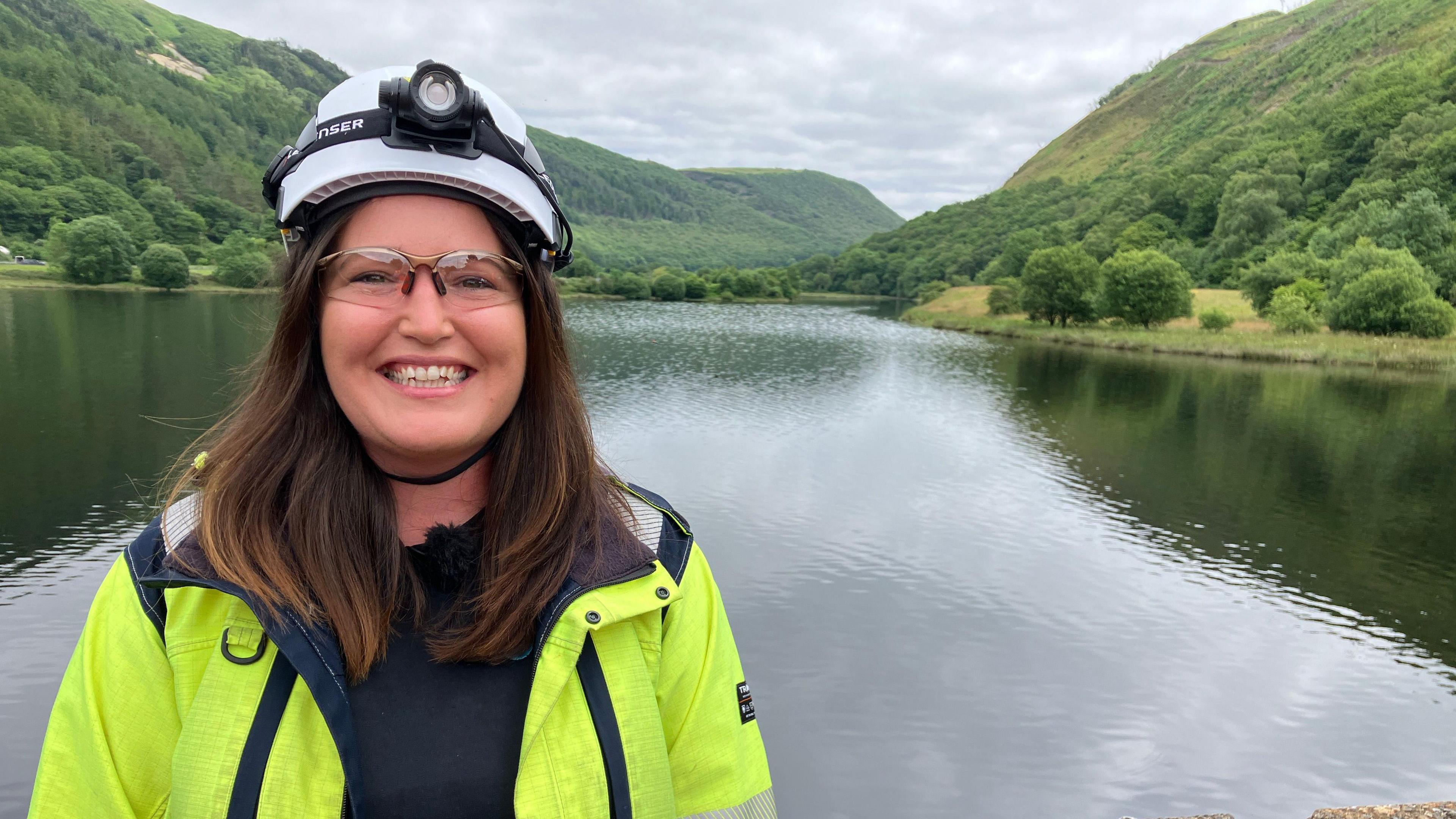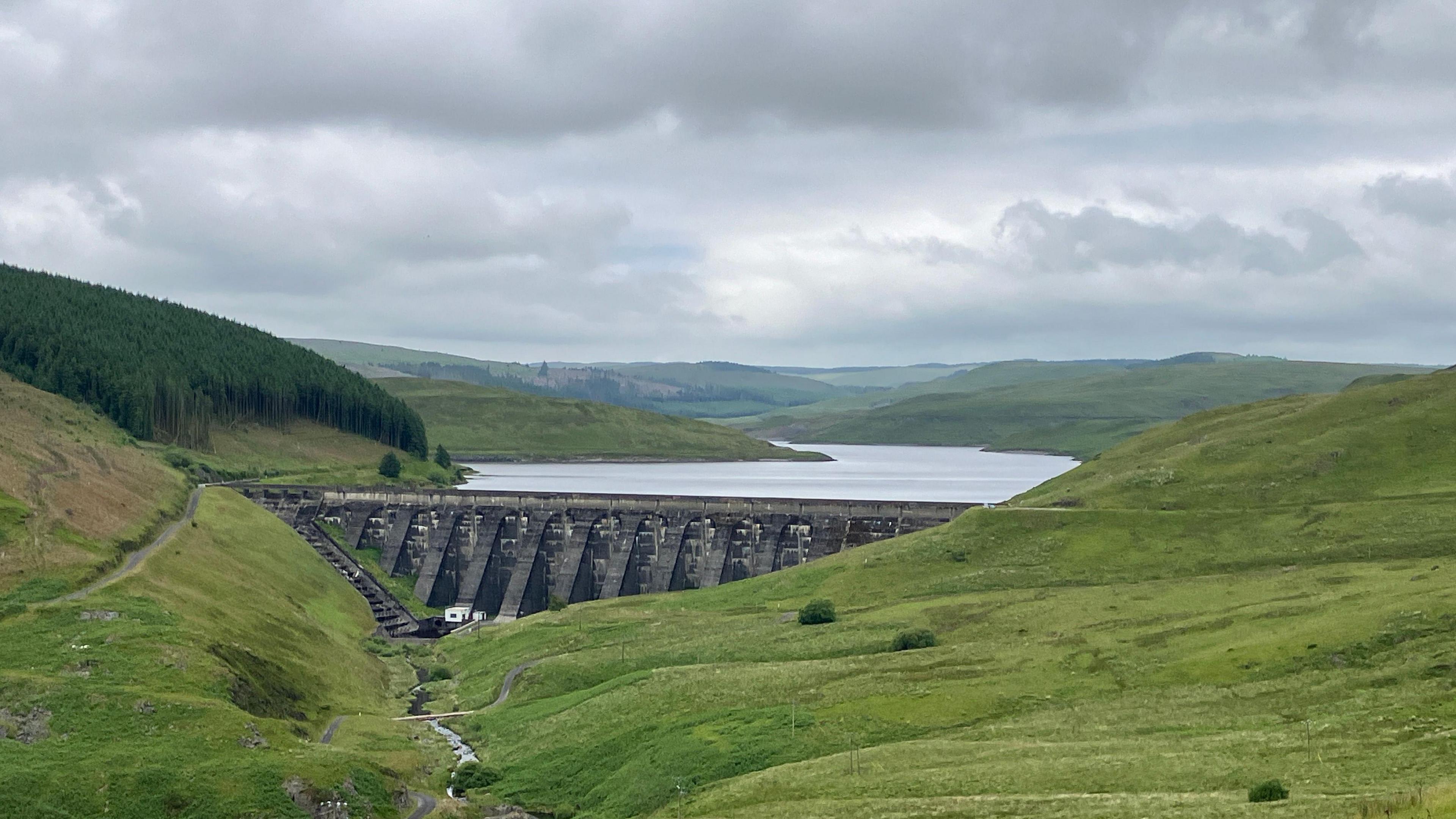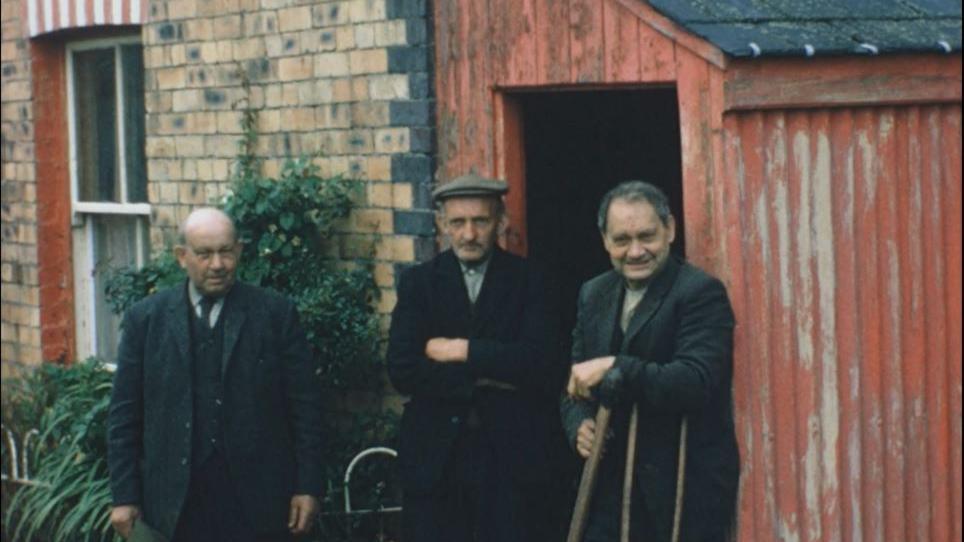Hydro scheme powering thousands of homes for 60 years

About 40 people are employed at the site, enjoying the views, including Sarah South, the health and safety officer
- Published
It is 60 years since a landmark hydropower plant opened - built before green energy was a focus, and to produce cheap power while not harming the countryside.
The Rheidol scheme, near Aberystwyth, Ceredigion, even has a fish "lift" and "ladder", to allow salmon and sea trout to pass the dams and reach their spawning grounds upstream.
Its 49 megawatt capacity means it can produce enough electricity to power the equivalent of 35,000 homes.
Owned by Statkraft, Europe's largest generator of renewable energy, it is believed to be the biggest of its kind in Wales or England.
Claim wind and solar may industrialise rural Wales
- Published12 August 2023
New wind farm helps net zero aim, says developer
- Published15 June 2023
The scheme uses the energy of water that flows from a network of reservoirs.
It covers an area of 162 square kilometres, which includes the Nant-y-Moch, Dinas and Cwm Rheidol reservoirs.
Nant-y-Moch, with a depth of 46m (150.9ft), is the largest.
It was created when a 350m (1,148ft) long dam was built across the Rheidol river, to hold back 26 billion litres of water.
Statkraft's vice president Dennis Geyermann said some people suggest the Dinorwig power station in Llanberis, Gwynedd, is bigger.
But he answers: "That's a pump storage, we are not pumped storage.
"Once the water has been guided to our turbines, it goes into the Rheidol river and ultimately the Irish Sea. So that makes [Rheidol] the biggest of its kind in Wales and England.
"It was an absolute milestone for mid and west Wales building such a large hydro station providing electricity to the grid, supplying a lot of jobs during the construction and after the construction as well."
About 40 people work at the power station now.

The scheme was built before green energy became a focus, but produces cheap energy while preserving the countryside
From Nant-y-Moch – which is more than 304m (1,000ft) above sea level - the water flows down to a 13 megawatt power station at Dinas where it drives a turbine connected to a generator to produce electricity.
From there, the water flows to the largest power station at Cwm Rheidol where there are two 20.5 megawatt generators.
It cost £10m to build, with work starting in 1957, and around 1,800 people were employed at the peak of the construction work.
John Elfed Jones, now 91, was the deputy project manager of the construction, and went on to be deputy manager of the power station.
He said it was built at a time before the focus on green energy, adding: "It wasn't necessarily considered 'renewable energy', [rather] a relatively cheap way to generate electricity.
"That was the attraction, not worrying about renewable energy."

Brothers John (left) and Jim James (right) had to leave their home for the plant to be built
To create the largest reservoir, the Nant-y-Moch valley, which included a chapel and a farmhouse was flooded.
The chapel was still in occasional use in the late 1950s and two brothers – John and James Jones – lived in the farmhouse.
A new house was built for them further up the valley, which they sold to buy a house closer to Aberystwyth.
John Elfed Jones said he thinks more hydropower projects could have been developed in Wales, but the controversial drowning of another Welsh valley in the 1960s to provide water for Liverpool made other schemes almost impossible.
"I don't think there are enough [hydropower schemes], but Tryweryn makes it very, very difficult to flood any type of valley to produce electricity in the future," he said.